Hyderabad for me is a special city – well it’s a city I grew up in and have some of my fondest memories of this bustling metropolis. Known for its Hindu and Muslim traditions and a culture that is a mix of Arabian, Turkish and Persian, the buildings, language, food and arts of Hyderabad have their own uniqueness. Built around the iconic Charminar which continues to be the city’s signature landmark and focal point, I saw that the city today has developed to new proportions. The Old City, however, is where the soul of the city resides.
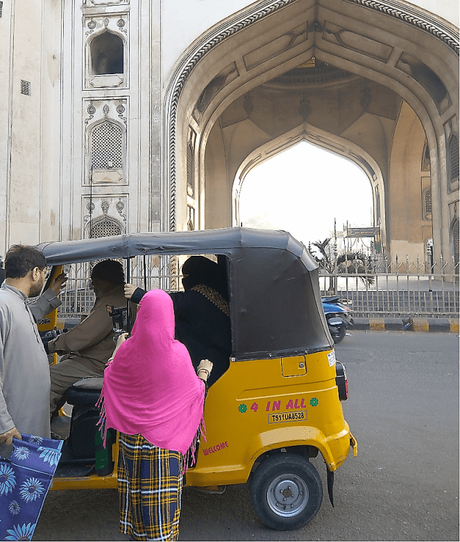 Early morning scenes around Charminar
Early morning scenes around Charminar
The heritage mosques and grand buildings that are surrounded by a cacophony of colourful bazaars selling pearls and lac bangles and cafes serving cutting Irani chai and samosas are part of the quintessential charm of the city. But, beyond this there is so much more that the city of Nizams has, courtesy the composite culture left by the wealthy Asif Jahi Nizams who ruled between 1724 and 1947. And a walk through this historic quarter gave me my lesson in the rich architecture, unique customs and age old traditions of the city.
Blast from the Past
The perfect place to gain some perspective and insight into the history and development of the city of pearls is to visit the Purani haveli (old palace) and the Nizam’s museum housed within. The Neo-classical building set amidst a huge complex in the old city was the main residence of the 6th Nizam, Mahbub Ali Pasha. The museum has a wide range of artefacts, models, photographs and information reflecting the luxury and opulence of the Asif Jahi Nizams.
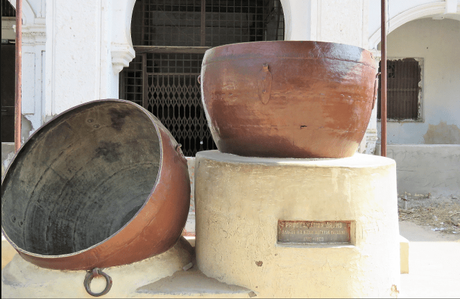
Apart from fascinating gold and silver objects that range from caskets to jewelry to cutlery to even scissors, the museum is full of models of landmark buildings of the city made up of pure silver. The other highlights that had me amazed include the Nizam’s magnificent wooden wardrobe, a 150-year-old manual elevator, gold and diamond crusted daggers and vintage proclamation drums. There is also an interesting section that traces the evolution of the city right from the 13th century to what it is today and includes several quirky descriptions of its dialect, customs, cuisine and culture. Do not miss the 176 feet long double storied wardrobe made of pure teak that was used by the Nizam!
Spirituality Calling
After my fill of history, I headed to the Badshahi Ashurkhana or the “Royal House of mourning”, a monument built by Muhammad Quli Qutub Shahi, that is off the beaten track but stands tall in the heart of old city. Dating to the late 16th century, this monument was originally built as a meeting place for Shias to congregate during the month of Muharram. Imposing gates led to a courtyard complex within which is constructed the hall whose walls are adorned with mosaic tiles that gleam predominantly in yellow and blue.
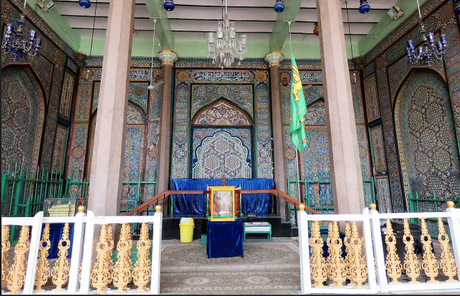
The intricate patterns, ornate inlay work and detailing speak volumes of the craftsmanship that seem to have wonderfully stood the test of time. Housed within are some truly beautiful silver and gold alams studded with precious stones that are carried during the procession held during Muharram. Built in the memory of Imam Hussain, I learnt that the hall is a picture of frenzied activity on Thursdays apart from the days leading upto the festival of Muharram. The place itself though a place of worship has many photo opportunities that makes it a place not to be missed.
Heritage Hues
For more old-world charm, I took a walk inside the bylanes of the old city where monuments built during the Nizam era stand as a mute witness to the past. Built with Hindu, Muslim and Persian schools of architecture, some of these buildings are rather dilapidated but still reflect the grandeur of the past.
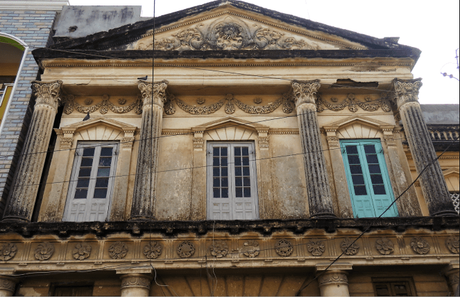
The narrow by lanes of Laad Bazaar, the famous bangle market, is home to several heritage structures including the historic gate that served as an entrance to the Mecca Masjid as well as the Jilu Khana gate leading to the magnificent Chowmahalla palace courtyard. The latter is a pointed arch gateway that was meant for dignitaries and used for ceremonies and festive occasions.
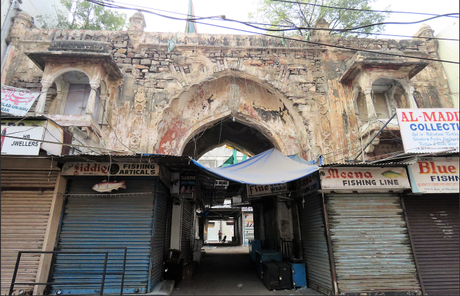
And as a lover of old doors, I discovered, many that have stood the test of time fastened by age old bars and unweathered locks on my way to the landmark Mehboob Chowk. This prominent ‘square’ named after the sixth Nizam Mir Mehboob Ali Khan, includes a mosque, a clock tower and age-old shops that have been functioning seamlessly from centuries.
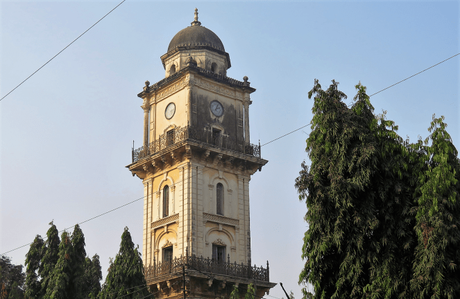
Built in 1817 by Khwaja Abdulla Khan, the unique feature of the mosque is that it runs on a self-sustainable model wherein the shops on the lower level pay rent to the mosque committee which is used for the upkeep and maintenance of the mosque. Standing tall is the 1850 clock tower that is five storeyed and replete with multi cusped arches. The Devdis of the Paigah nobles, Shahi Khazana Building (Pension office) are yet other buildings that reek the quintessential charm of the old city.

Retail Therapy
Little shops selling ittars or the indigenously made perfumes in colourful glass vials, prayer books, colourful chaddars and incense line the busy streets with vendors luring you with their colourful display. Made sans chemicals, ittars contain essential oils replete with herbal and floral extracts and have a sandalwood base. I found, the local speciality known as “gil” that captures the aroma of wet earth drenched after the first rains of the season to be a truly exquisite fragrance! Wedding shoppers will rejoice as there are stores specializing in wedding ware too with brocade silk turbans for bridegrooms, peacock feathers that are gifts for the bride, henna cones and everything else needed for a bride’s trousseau. Herbal concoctions and native resins used along with hollow cane baskets painted in bright hues of red and green serving as handcrafted hair dryers for brides are yet some of the other exclusive stuff found here.
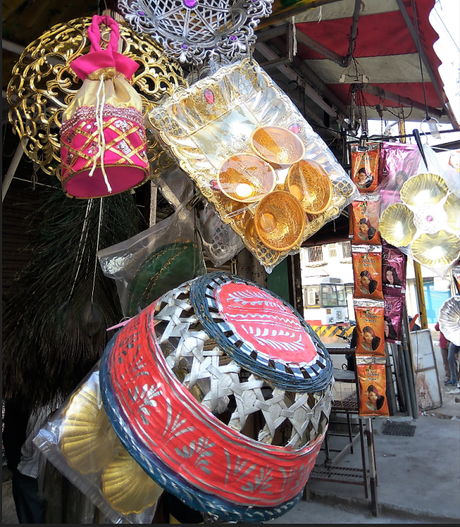
Do not miss the metal ware shops selling all kinds of knives, hammers, keys and skillets as well as the stores making ‘varakh’ used for covering sweets. The latter is made by pounding silver into wafer thin sheets which finally make their way on sweets as a decorative foil.
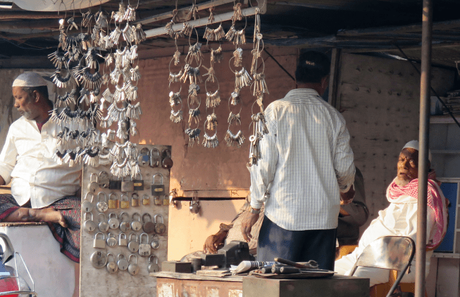
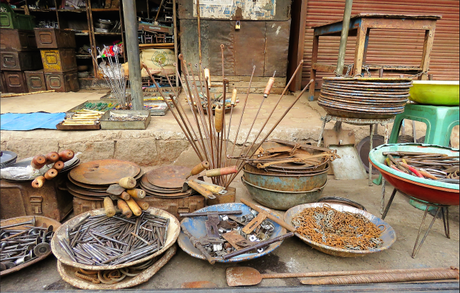
Paigah tombs are yet another hidden gem to be explored in the city. An edited version of this article was originally published in Deccan Herald.
